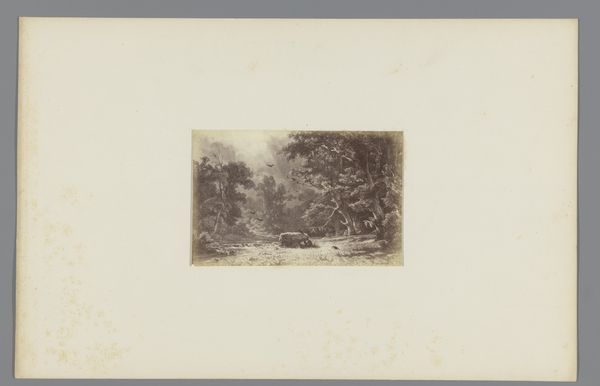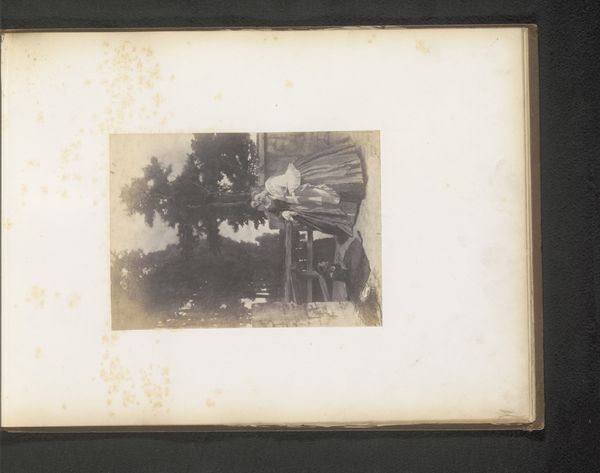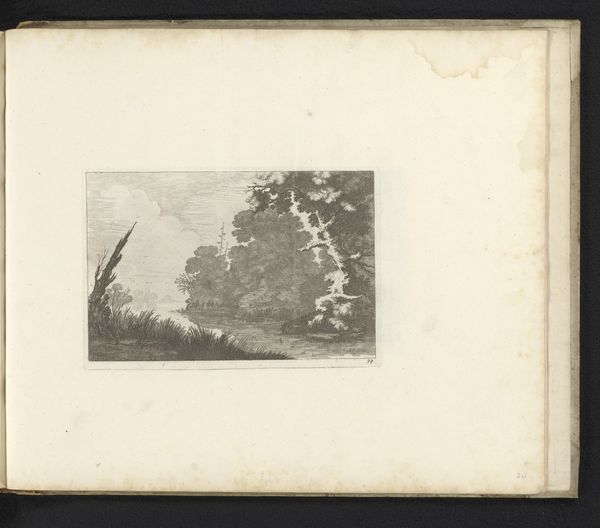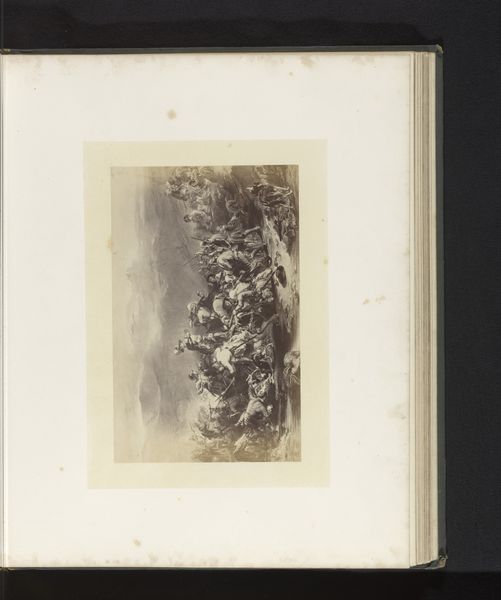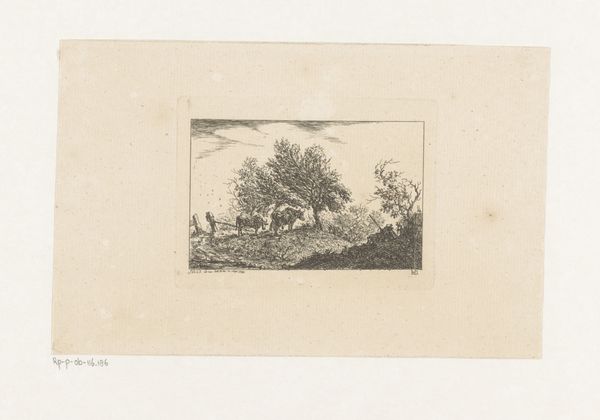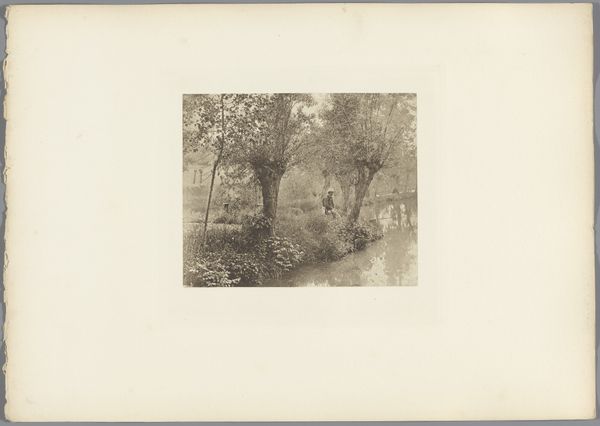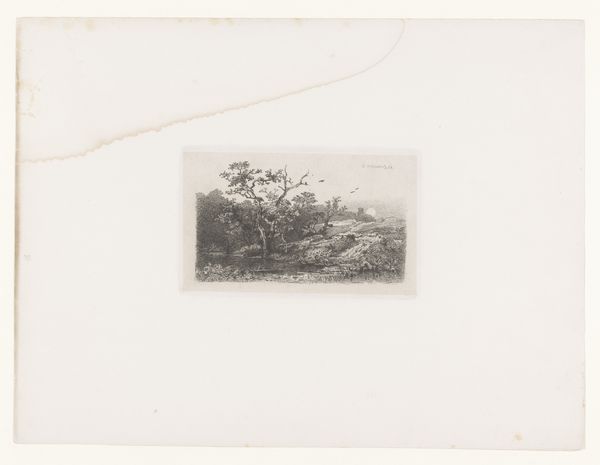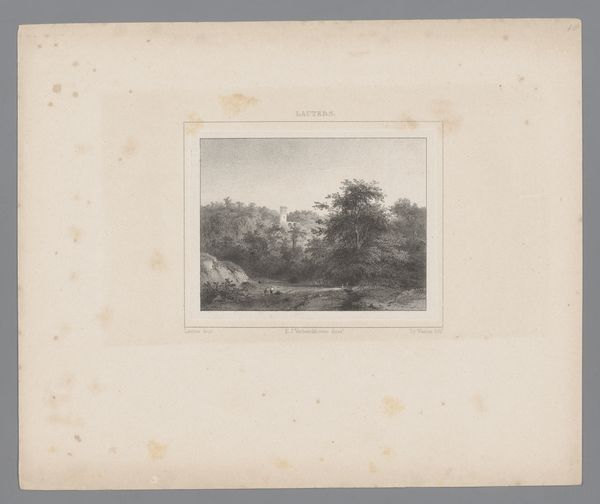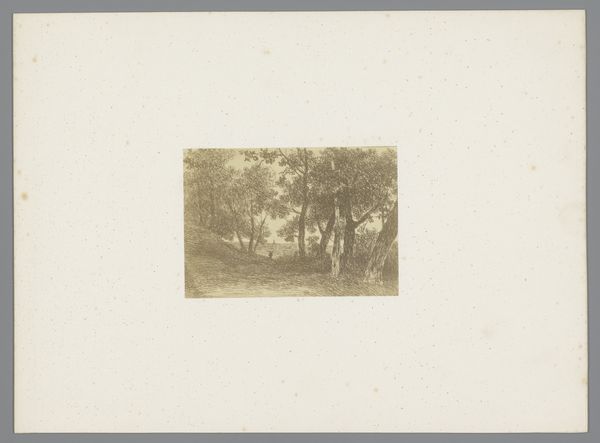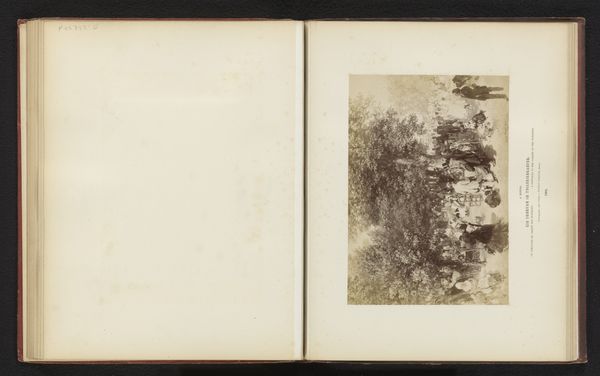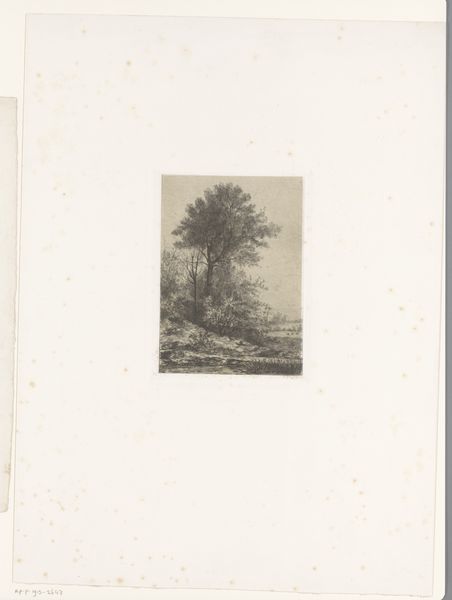
Fotoreproductie van het schilderij 'Eene landschapstudie' door Maria Vos before 1871
0:00
0:00
bingerchits
Rijksmuseum
Dimensions: height 125 mm, width 181 mm
Copyright: Rijks Museum: Open Domain
Curator: I’m immediately drawn to the textures here, a mix of delicacy and ruggedness. Editor: You know, it’s funny you mention that because this is actually a reproduction, a photograph of a drawing. Specifically, a pencil drawing by Maria Vos, titled "Eene landschapstudie" – “A Landscape Study.” It was made before 1871, so we are looking at a depiction of mid-19th-century Holland and we are seeing it filtered through several layers of technology and cultural preferences. Curator: That’s fascinating! The subject feels so… grounded, literally. A simple cart, ordinary tools, but framed within this softer, romantic light, I feel a distinct pastoral sentiment. Editor: That is exactly how landscape studies served artists at that time. This area, near the Haarlemmerhout park, was a favorite amongst artists to recharge but also to capture "real" life for future compositions in the studio. Although Vos was an accomplished painter in her own right, sketches like this highlight the institutional history surrounding the Romantic and Realist movements. She wasn't just observing nature, she was participating in a specific dialogue around its representation. Curator: Yes, and in that context the cart takes on a different tone, doesn't it? Not just a mundane object, but something almost allegorical, representative of labor, of rural life. And the wheel, quite prominent, perhaps suggesting a cycle of work and time, themes prevalent in Dutch art, harkening back to ideas embedded since the 17th Century. Editor: Precisely. The romanticism on display is really the ability to create cultural meaning from familiar symbols. Consider that Vos likely intended this to be a study; so for it to end up in a collection such as that of the Rijksmuseum elevates not just her skill, but the taste-making mechanisms that find significance even in the preparatory efforts. Curator: What I admire about this landscape sketch, or at least its reproduction, is the intimacy and universality it represents through mundane imagery; it makes me consider those connections that tie past generations to our present day experience. Editor: It’s a powerful reminder, I think, of the way social and artistic movements often interweave, changing both our understanding and our expectations of images that document them.
Comments
No comments
Be the first to comment and join the conversation on the ultimate creative platform.
